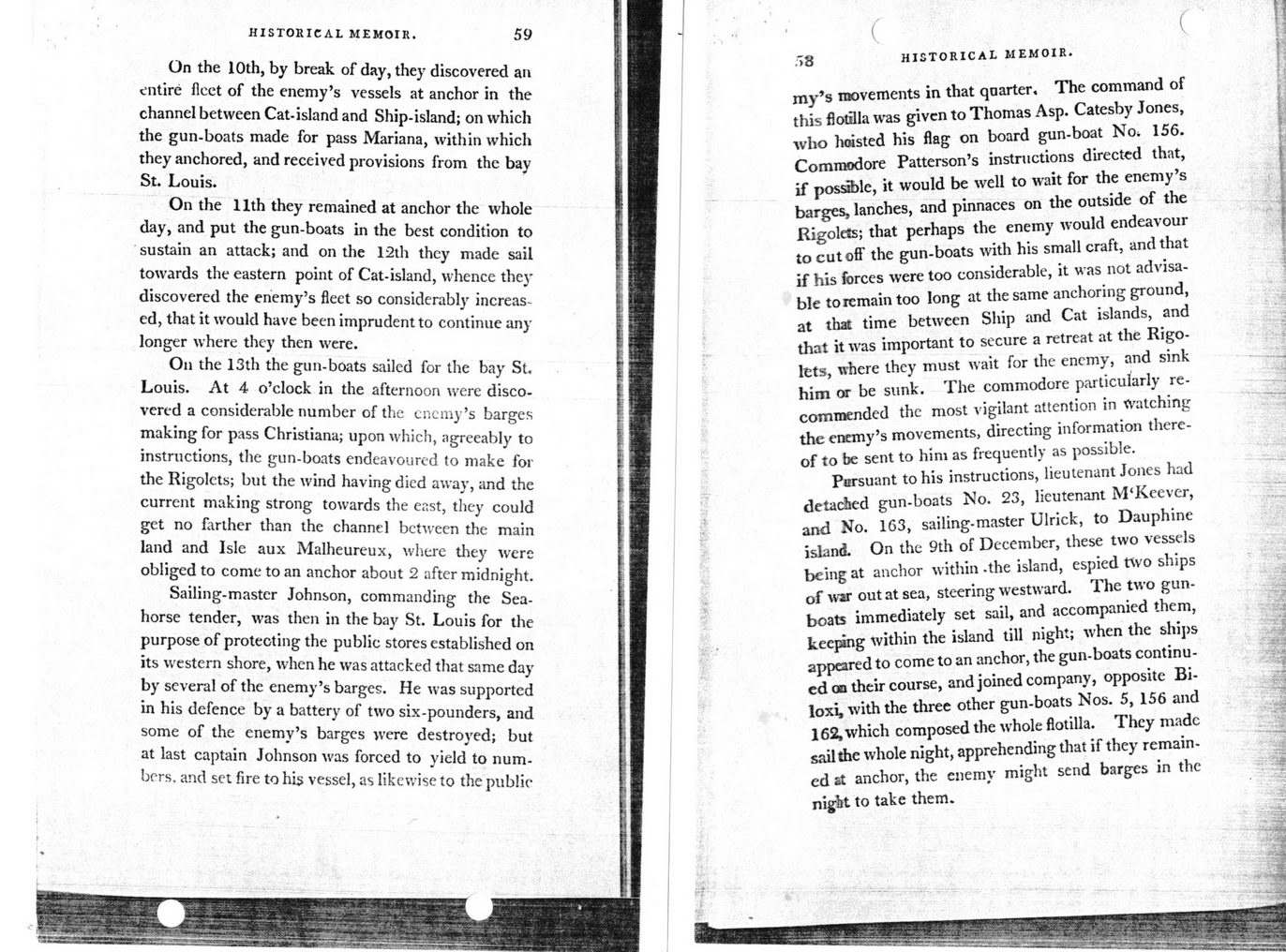This text was obtained via automated optical character recognition.
It has not been edited and may therefore contain several errors.
HISTORICAL MEMOIR. 59 On the 10th, by break of day, they discovered an entire fleet of the enemy?s vessels at anchor in the channel between Cat-island and Ship-island; on which the gun-boats made for pass Mariana, within which they anchored, and received provisions from the bay St. Louis. On the 11th they remained at anchor the whole day, and put the gun-boats in the best condition to sustain an attack; and on the 12th they made sail towards the eastern point of Cat-island, whence they discovered the enemy?s fleet so considerably increased, that it would have been imprudent to continue any longer where they then were. On the 13th the gun-boats sailed for the bay St. Louis. At 4 o?clock in the afternoon were discovered a considerable number of the enemy?s barges making for pass Christiana; upon which, agreeably to instructions, the gun-boats endeavoured to make for the Rigolcts; but the wind having died away, and the current making strong towards the east, they could get no farther than the channel between the main land and Isle aux Malheureux, where they were obliged to come to an anchor about 2 after midnight. Sailing-master Johnson, commanding the Seahorse tender, was then in the bay St. Louis for the purpose of protecting the public stores established on its western shore, when he was attacked that same day by several of the enemy?s barges. He was supported in his defence by a battery of two six-pounders, and some of the enemy?s barges were destroyed; but at last captain Johnson was forced to yield to numbers, and set fire to his vessel, as likewise to the public HISTORICAL MEMOIR. my?s movements in that quarter. The command of this flotilla was given to Thomas Asp. Catesby Jones, who hoisted his flag on board gun-boat No. 156. Commodore Patterson?s instructions directed that, if possible, it would be well to wait for the enemy?s barges, lanches, and pinnaces on the outside of the Rigolets; that perhaps the enemy would endeavour to cutoff the gun-boats with his small craft, and that if his forces were too considerable, it was not advisable to remain too long at the same anchoring ground, at that time between Ship and Cat islands, and that it was important to secure a retreat at the Rigolets, where they must wait for the enemy, and sink him or be sunk. The commodore particularly recommended the most vigilant attention in Watching the enemy?s movements, directing information thereof to be sent to him as frequently as possible. Pursuant to his instructions, lieutenant Jones had detached gun-boats No. 23, lieutenant M?Keever, and No. 163, sailing-master Ulrick, to Dauphine island. On the 9th of December, these two vessels being at anchor within -the island, espied two ships of war out at sea, steering westward. The two gunboats immediately set sail, and accompanied them, keeping within the island till night; when the ships appeared to come to an anchor, the gun-boats continued on their course, and joined company, opposite Biloxi, with the three other gun-boats Nos. 5, 156 and 162, which composed the whole flotilla. They made sail the whole night, apprehending that if they remained at anchor, the enemy might send barges in the nigbt to take them.

Battle of 1814 59